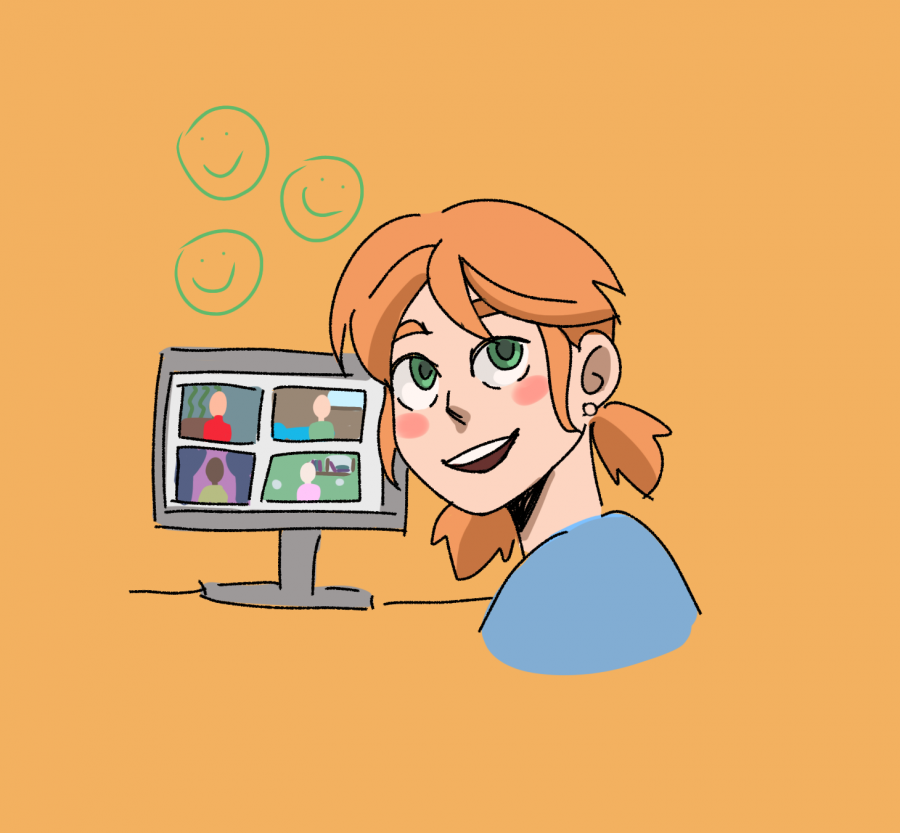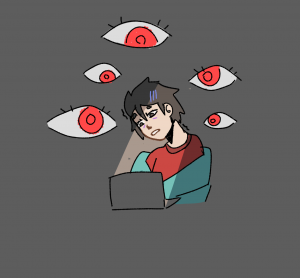Providing a means for the most intrinsic social interactions, cameras should be required during Zoom classes
Graphic Courtesy of Jessica Wu
Due to COVID-19, many changes have been made to the participation of extracurricular activities, including clubs, sports and volunteer opportunities.
December 30, 2020
During the 2020-2021 school year, Montgomery County Public Schools witnessed a massive spike in the number of students failing their classes, and schools are scrambling to figure out how they can improve virtual learning. Online school has drained students, leaving them overwhelmed, undermotivated and paralyzingly stressed. Additionally, teachers have been forced to navigate through online school for the first time with the expectation that they will teach all the required material while also being mindful of each student’s individual situation. In order to alleviate the burden on both groups, students should be required to take the simple but impactful step of turning on their cameras.
Ever since virtual learning began, the number of students failing classes has increased threefold compared to previous school years, VOA News reported. One of the key factors in this drop is the absence of students and teachers forming strong relationships. According to NPR, school systems that have been successful in online migration are ones that have focused on communication, relationships and social learning. Making cameras mandatory for online school would be conducive to a cohesive learning environment because it allows students and teachers to associate voices with actual faces.
Student-teacher relationships are essential, but students that refrain from turning their cameras on create obstacles to their formation. Junior Sarah Luan said, “for me, it’s important to have cameras on because you can actually make more of an engaging environment with your classmates and teachers.” Students learn better when they can comfortably communicate with their teachers and tell them when they are having trouble so the teacher can better assist them. Students feel less alone even when they are trapped in their homes or isolated from other people. Small interactions make a world of difference to some.
Keeping cameras on would also keep students accountable, ensuring they are not constantly looking at their phones or completing other assignments during instructional time. Sophomore Desiree Chen said, “[keeping cameras on] just allows me to focus because the teacher can see what I’m doing when I have my camera on.” One of the biggest aspects missing in a virtual environment is a teacher’s ability to keep track of all students and gauge their understanding. History teacher John Pearce said, “I can’t see what they’re doing [when cameras are off] and like, help them when they feel like they need it, or like when they might not even realize that they’re needing help.”
A commonly shared frustration with online school among teachers is having to stare at a black screen of names. Teachers already have to deal with not being able to interact directly with their students or have the advantage of teaching in a physical environment, so students having their cameras off is another barrier they have to overcome just to do their jobs. Zoom rooms, where students share their video, mimic in-person settings that permit natural interactions and dialogue. Pearce says, “I already feel lost in not knowing how to help students… so [turning cameras on is] just one way I can connect [with] the students.”
Facial expressions and reactions are essential for teachers, especially during online learning, as it is impractical for students to unmute and respond each time an instructor shares an interesting comment or makes a joke. Additionally, it is tedious for teachers to constantly check all their private messages and disturbs the flow of the class. When a teacher can visibly see a student’s confusion, it gives teachers the sign to elaborate, repeat directions or pause to ask if anyone has questions. Having cameras off prevents this natural way of showing emotion.
The biggest argument against mandatory camera policies is a student’s individual home situation, discouraging them from showing their faces or surroundings. Familial issues, anxiety, and other problems contribute to some students being reluctant to turn on their cameras. However, accommodations for these types of situations are already provided at Richard Montgomery and permit students with legitimate extenuating circumstances to keep their cameras off through a process outlined in a letter sent out by Principal Damon Monteleone. This solves the problem of students who cannot or are unwilling to turn on their cameras due to their unique circumstances.
While the introduction of online learning in places like MCPS is the safest and most responsible response during this pandemic, the gaps and differences between online and physical learning are vast. With climbing fail rates and struggling teachers, making online learning similar to physical learning should be a priority and mandatory camera policies being a key way to achieve an experience similar to an in-person class. During these times of social isolation and loneliness, the simple gesture of turning on a camera can bring communities closer together and provide us with some much-needed sense of normalcy.



